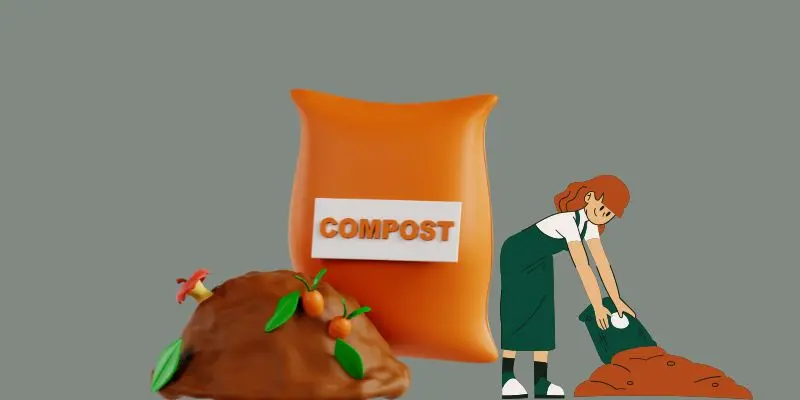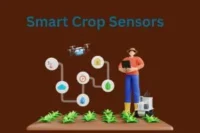Fertilizer Management Tips – Nourish Your Soil, Grow with Purpose
Published: 13 May 2025
I kept hearing that fertilizer was essential for plant growth, but every time I looked at a bag or bottle, I felt overwhelmed. What do those numbers mean? Am I supposed to use organic or chemical? And what if I use too much? I wanted healthy plants, but I didn’t want to guess and get it wrong. If you’ve felt the same, you’re not alone—understanding fertilizer doesn’t have to be complicated. Let’s break it down together.
- So, guys, without wasting time, let’s jump into the article to learn the Fertilizer Management Tips – Nourish Your Soil, Grow with Purpose
Why Fertilizer Management Matters
Grow More Than Plants—Grow Intention
- Fertilizer isn’t just about feeding crops—it’s about restoring balance to your soil.
- Misuse leads to burnt plants, wasted nutrients, and environmental harm.
- Proper fertilizer use means more than bigger yields; it means respecting your land and growing with purpose.
Understand Your Soil First
Healthy Growth Starts Below the Surface
- You can’t manage what you don’t know—get a soil test to identify nutrient needs.
- Know the pH, nitrogen (N), phosphorus (P), and potassium (K) levels.
- Fertilizer is not one-size-fits-all—overfeeding can be as harmful as underfeeding.
Choose the Right Fertilizer
Match the Need, Not the Label
- Understand the N-P-K ratio and what your plants need:
- Nitrogen (N) = Leafy growth
- Phosphorus (P) = Roots and flowers
- Potassium (K) = Overall health and disease resistance
- Organic vs synthetic fertilizers—choose based on your soil goals and environmental values.

Time It Right
Feed When the Plants Can Actually Eat
- Apply fertilizer during active growth stages—not before seeds germinate or during dormancy.
- Split applications into smaller doses to avoid nutrient leaching and burning.
- Slow-release fertilizers offer gradual support without overwhelming the plant
Apply with Care and Precision
Every Handful Counts
- Over-application can cause root damage, runoff, and wasted money.
- Use tools like measuring cups or spreaders—guessing can cost your garden.
- Water immediately after applying dry fertilizers to help nutrients absorb properly
Organic Alternatives and Natural Boosters
Feed the Earth While Feeding Your Garden
- Compost, worm castings, fish emulsion, and manure tea offer slow, steady nutrition.
- These enrich the soil structure and promote microbial life without synthetic chemicals.
- Organic feeding builds long-term soil health, not just short-term growth.
Know the Signs of Over or Under-Fertilizing
Listen to What Your Plants Are Telling You
- Yellowing leaves = nitrogen deficiency
- Dark, dry leaf edges = potassium deficiency
- Weak roots or stunted blooms = phosphorus issue
- Burned tips, brittle leaves = over-fertilization
8. Seasonal Fertilizer Management
Adapt with the Seasons, Like Nature Does
- Spring: Focus on nitrogen for leafy growth
- Summer: Support flowering and fruiting with balanced or P-K rich blends
- Fall: Add compost or slow-release formulas for long-term soil health
- Avoid fertilizing during winter dormancy unless indoors
Fertilizer and Sustainability
Grow Greener, Not Just Bigger
- Avoid chemical run-off by using buffer zones near water bodies
- Choose eco-labeled or certified organic products
- Use composting and crop rotation to reduce dependency on commercial fertilizers
- Fertilizing with purpose helps protect groundwater, air quality, and pollinators

Final Thoughts
Grow with Heart, Not Just Habit
- Fertilizer is more than a product—it’s a relationship with the land.
- When you apply with care, timing, and intention, you grow more than crops—you grow trust with the earth.
- “Healthy gardens start with healthy soil—and healthy soil starts with mindful choices.”
FAQs about Fertilizer Management
Here are some of the most frequently asked questions about the Fertilizer Management Tips – Nourish Your Soil, Grow with Purpose
Fertilizer management is the strategic use of fertilizers to meet plant needs while protecting soil health and reducing waste.
Soil testing identifies nutrient deficiencies and prevents over- or under-fertilization, ensuring better plant growth.
N-P-K stands for Nitrogen, Phosphorus, and Potassium—key nutrients that support plant growth, roots, and overall health.
Fertilize during the active growing season, usually in spring or early summer, when plants can absorb nutrients efficiently.
Yes, too much fertilizer can burn roots, damage leaves, and lead to poor plant health or even death.
Compost, worm castings, fish emulsion, and manure are great organic choices that feed both plants and soil microbes.

- Be Respectful
- Stay Relevant
- Stay Positive
- True Feedback
- Encourage Discussion
- Avoid Spamming
- No Fake News
- Don't Copy-Paste
- No Personal Attacks

- Be Respectful
- Stay Relevant
- Stay Positive
- True Feedback
- Encourage Discussion
- Avoid Spamming
- No Fake News
- Don't Copy-Paste
- No Personal Attacks





